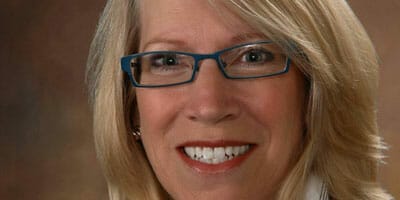Renowned academic Ashby Monk said the best way to lure talent to US public sector retirement funds unable to pay Wall Street salaries was to hire the green, the grey or the grounded.
With a 30-year career spanning business, government and media, Theresa Whitmarsh, executive director of the $92.1-billion Washington State Investment Board (WSIB) laughs that her experience could count for the odd grey hair.
But it is a grounding and desire to give back in an area where she has lived for the last 23 years that she says best characterises her loyalty to WSIB, investment manager for 17 retirement plans for Washington State’s public employees from teachers to judges.
After joining in 2003 as chief operating officer, she now heads a fund that is unusual among its peers on several counts: it is one of only four US public sector funds that is funded at 95 per cent or more, and a quarter of its total assets under management are invested in private equity.
Capitalising on an accident
It’s a 25-per-cent allocation, drawing on relationships with over 100 managers, which Whitmarsh attributes as much to “an accident of history” as anything else. The program began with the fund’s first foray into the asset class in 1981 and the subsequent growth of expertise in the strategy led to confidence by the WSIB in an increased exposure.
The portfolio has now built a momentum of its own.
“Because we have three decades of expertise, we believe we have something of a competitive advantage, including both access to the best funds, that perhaps new entrants wouldn’t have, and access to larger allocations in the best partners because we are a preferred investor,” she says. The private equity portfolio has generated $15.8 billion in profits since its inception.
It’s a track record that lends perspective when faced with lacklustre short-term returns.
The portfolio’s 10-year return net of fees was 13.54 per cent, but five-year returns come in at 3.82 per cent and three-year returns at 12.68 per cent.
Whitmarsh attributes the short-term underperformance to private equity lagging public markets, which roared back to life last year. She says WSIB pursues a long-horizon strategy and stays the course through market cycles, though it does make tactical moves such as underweighting Europe and concentrating European allocations to Germany and the Nordic economies during the euro crisis.
More recently the fund sees real opportunity in the energy sector.
“We are putting more money to work here,” she says.
Investing mostly through limited partnerships, WSIB also has a co-investment program with manager Fisher Lynch. Because its limited partnerships span sectors, strategies and geographies, all co-investments are evaluated so as not to trigger concentration risk.
“Our co-investment program has grown but it is not as large as we originally thought,” she says.
Believing in equity risk premium
The public equity allocation accounts for 37 per cent of assets under management at WSIB and returned 11.58 per cent over the last year.
Allocations to domestic and international equity are in low-cost, broad-based passive index funds, with active emerging market and global mandates. The board is mid-way through reviewing its asset allocations, but Witmarsh only expects minor adjustments in the equity allocation.
“The Board believes in equity risk premium,” she says. The fund’s aversion to active equity management, accept these emerging markets and global mandates, partly explains why it doesn’t have any allocation to hedge funds.
“Most hedge fund strategies are active equity with private equity fees. We think it is really hard to consistently outperform passive equity.”
The fact that illiquid allocations already account for 40 per cent of the portfolio also explains why WSIB has neither room nor appetite for hedge funds, she says.
The Board’s 20-per-cent active fixed income allocation is designed to bring diversity and liquidity.
Although Whitmarsh acknowledges rising interest rates as a “concern”, she believes the fund is well positioned to weather expected rates rises.
One of the reasons is the track record of the fund’s 10-strong internal investment team. It has significantly outperformed the benchmark Barclays Universal Index every year for the last 10 years, something she describes as “very hard to do”. During the five years ending March 2013, fixed income was the best performing asset class in the whole WSIB portfolio.
Still defining the investment model
The fund’s 13.8-per-cent allocation to diversified real estate encompasses different geographies, properties and mangers with particular investment styles.
The focus is particularly on privately held properties leased to third parties. A tangible asset portfolio, begun in 2008, only has a 2.5-per-cent allocation despite its 5-per-cent target. The reason for the portfolio’s slow start reflects the fund’s careful approach, says Whitmarsh.
“Finding the good fund managers takes a lot of sorting and we are still defining our investing model,” she says adding that the tangible team is now three strong with two more hires in the pipeline.
“Good investment ideas draw capital, but so do bad ones. When it comes to investing, there is sometimes a first-mover disadvantage.”
Fully funded, WSIB has exceeded its rate of return every year since inception.
It currently has a state legislature-set assumed rate of return of 7.9 per cent, but this will be adjusted down to 7.5 per cent in line with the fund’s latest capital market assumptions. It’s indicative of the state’s flexibility and willingness “to put more money on the table” to meet contributions when economic conditions tighten, says Whitmarsh.
“There have been times when returns have been so great the legislature has been able to take a holiday.
Other times, in tougher economic conditions, it has guaranteed adequate contributions.”
Other signs of the proactive policy to manage funding levels include introducing new defined contribution retirement plans 10 years ago, something other public US funds are only now looking at. It’s a funding strategy that has helped give Whitmarsh and her team the freedom to hone an investment strategy focused on growth and the “real pleasure” of delivering superior returns for beneficiaries.



